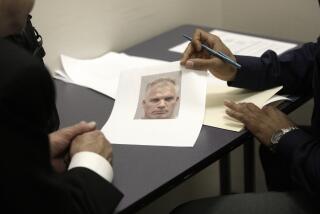Editorial: Anti-bias training for police is just a start
Here’s some bad news: You’re a little bit racist. Probably sexist, ageist and classist too. It’s not your fault, though; we all are.
“Implicit bias” is what academics call the subconscious beliefs, both positive and negative, that drive all of us when we encounter people of different races, economic status, gender and so on. It’s a term that has recently become de rigueur among law enforcement officials as the nation’s attention has turned, appropriately, to the intersection of race and policing in the wake of a handful of high-profile killings of unarmed African American men.
Now the good news: Our unconscious biases don’t have to own us; experts say they are malleable and that there are effective ways to reduce their influence. That’s the theory behind the implicit-bias training that some policymakers have embraced in response to the public outcry and is at the core of former U.S. Atty. Gen. Eric H. Holder Jr.’s National Initiative for Building Community Trust and Justice, announced last year.
It may sound a tad woo-woo, but the idea of implicit bias is not, in fact, a new concept. There’s substantial social science evidence that it exists — and that it can be overcome. Although it has become better known since 18-year-old Michael Brown was killed by a police officer in Ferguson, Mo., last year, researchers and psychologists have been plumbing our ingrained prejudices for more than three decades to see how they affect our interactions. What they have found is perhaps not entirely surprising: teachers more likely to favor boys than girls; attorneys providing different levels of defense to clients based on their unconscious feelings; and police officers quicker to fire their guns at black suspects than at white ones.
Those findings have helped shape policies and training courses used in schools, universities, courtrooms and hospitals. The Chicago and Los Angeles police departments, among others, have incorporated the concepts of anti-bias education in their training, though not in any uniform way.
They have also led to the development of the widely used Implicit Assessment Test, which has become the standard in anti-bias training. It’s a very simple concept: The version that tests black/white biases flips through pictures of human faces of both races and asks the subject to assign either a negative or positive word, such as “love” or “terrible,” to the picture. But the test moves so quickly that the subject’s subconscious takes over. See for yourself; self-administered versions of the test are easy to find online.
California is about to put the implicit-bias concept to use. The Central Valley city of Stockton is one of the six sites that will try out Holder’s program. And last month, state Atty. Gen. Kamala D. Harris announced that her office is developing the nation’s first certified implicit-bias training, with the support of law enforcement officials and Stanford’s Jennifer Eberhardt, one of the nation’s top experts on biases in policing.
It makes sense to have standardized training, rather than a piecemeal approach that may not be based on best practices. Badly done training can actually exacerbate biases, experts say. Sitting a bunch of officers in a room, for example, to tell them they are racist and to cut it out or else, may have the effect of deepening resentments. Department of Justice officials says they are planning a more enlightened approach: an eight-hour course that includes taking the bias test and talking about the findings. It will include scenarios and role-playing to help officers build new associations.
The training will be followed up with measurement tools that gauge whether it has been effective. It will be paired with training on “procedural justice,” another hot term that gets at a pretty basic idea: that communicating with people about why you stopped them helps to ease suspicions of racial profiling. The course will become part of the state’s police officer training by this fall. It won’t be required but should be strongly encouraged.
It’s good that California is adopting anti-bias training in a comprehensive way. But it will certainly take more than a few hours-long training courses to erase unconscious biases built on hundreds of years of personal and institutional racism that has created deep divisions in American society.
Follow the Opinion section on Twitter @latimesopinion and Facebook
More to Read
A cure for the common opinion
Get thought-provoking perspectives with our weekly newsletter.
You may occasionally receive promotional content from the Los Angeles Times.










